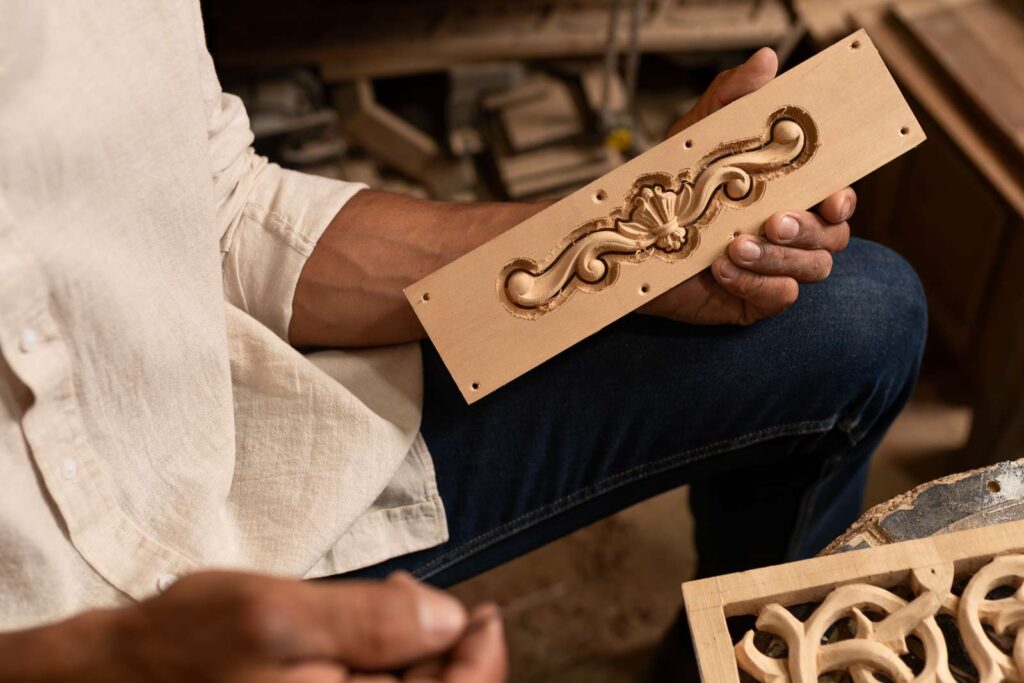- We are open every : MON - SUN : 6:00AM - 7:00 PM
- balidriverandtour12@gmail.com

Balinese wood carving art is one of the most treasured cultural expressions on the island. More than decoration, this traditional craft represents devotion, patience, and creativity that have been passed through generations. Bali’s wood carvers transform simple pieces of timber into stunning works of art that capture the island’s spiritual and artistic soul.
Wood carving in Bali isn’t just an art form; it’s a heritage carried through families. Many Balinese carvers begin learning at a young age, guided by their fathers or grandfathers. In villages like Mas, near Ubud, carving is a way of life. Every household seems to have a workshop where the scent of freshly cut wood fills the air and the sound of chisels echoes softly through the day.
This craft is more than technique it’s about connection. Each carving tells a story of devotion, community, and a deep respect for tradition. Even today, modern carvers maintain this legacy while experimenting with new designs and global art influences.
In Balinese culture, art and spirituality are deeply intertwined. Wood carvings often depict Hindu deities, mythical creatures, or protective spirits. They adorn temples, shrines, and homes, believed to balance spiritual energy and ward off negativity.
The process begins with a ceremony to honor the gods and the tree from which the wood was taken. This act shows gratitude and respect for nature — a reminder that every creation has a spiritual foundation.


Balinese wood carving is rich in variation. Each region and artist brings a unique touch to their creations. Some of the most common forms include:
Traditional Reliefs: Depicting scenes from Hindu epics like the Ramayana or Mahabharata.
Animal Sculptures: Symbolizing power, grace, and protection.
Mask Carvings: Used in traditional dances and ceremonies, each mask embodies a distinct spirit or emotion.
Modern Decorative Pieces: Designed for art lovers worldwide, combining traditional skill with modern aesthetics.
Balinese artisans typically use woods like teak, ebony, crocodile wood, and hibiscus. Each type has a different character — some dense and dark, others soft and easy to carve. The carvers use simple hand tools such as chisels, mallets, and knives. What makes their work extraordinary is not the equipment, but the patience and vision behind every detail.
As tourism grows, Balinese carving has found a global audience. Art collectors and visitors often admire these creations, purchasing them as symbols of Bali’s rich cultural identity. Yet, for many Balinese, carving remains a sacred practice rather than just a business.
Organizations and local communities are working together to ensure that younger generations continue learning this art. Schools and workshops in Ubud and Gianyar offer classes where visitors can also experience the joy of shaping wood with their own hands.
If you’re visiting Bali, take the time to explore Mas Village, where wood carving thrives. Watching local artisans at work offers a deep sense of respect for their patience and skill. You can even commission a custom carving a unique piece that holds a story of Bali within it.
The art of Balinese wood carving isn’t fading — it’s evolving. Through generations, it continues to represent devotion, patience, and artistic excellence. By supporting local craftsmen and visiting their workshops, you’re not just buying art — you’re helping preserve a living tradition that defines Bali’s cultural heart.
If you’re planning your Bali trip and want to experience the island’s authentic culture, our team at balidriverandtour.com can take you to the best carving villages and cultural sites.
✨ Book your cultural tour today and discover the true craftsmanship of Bali’s talented artisans.
Bali Driver & Tour – 2024